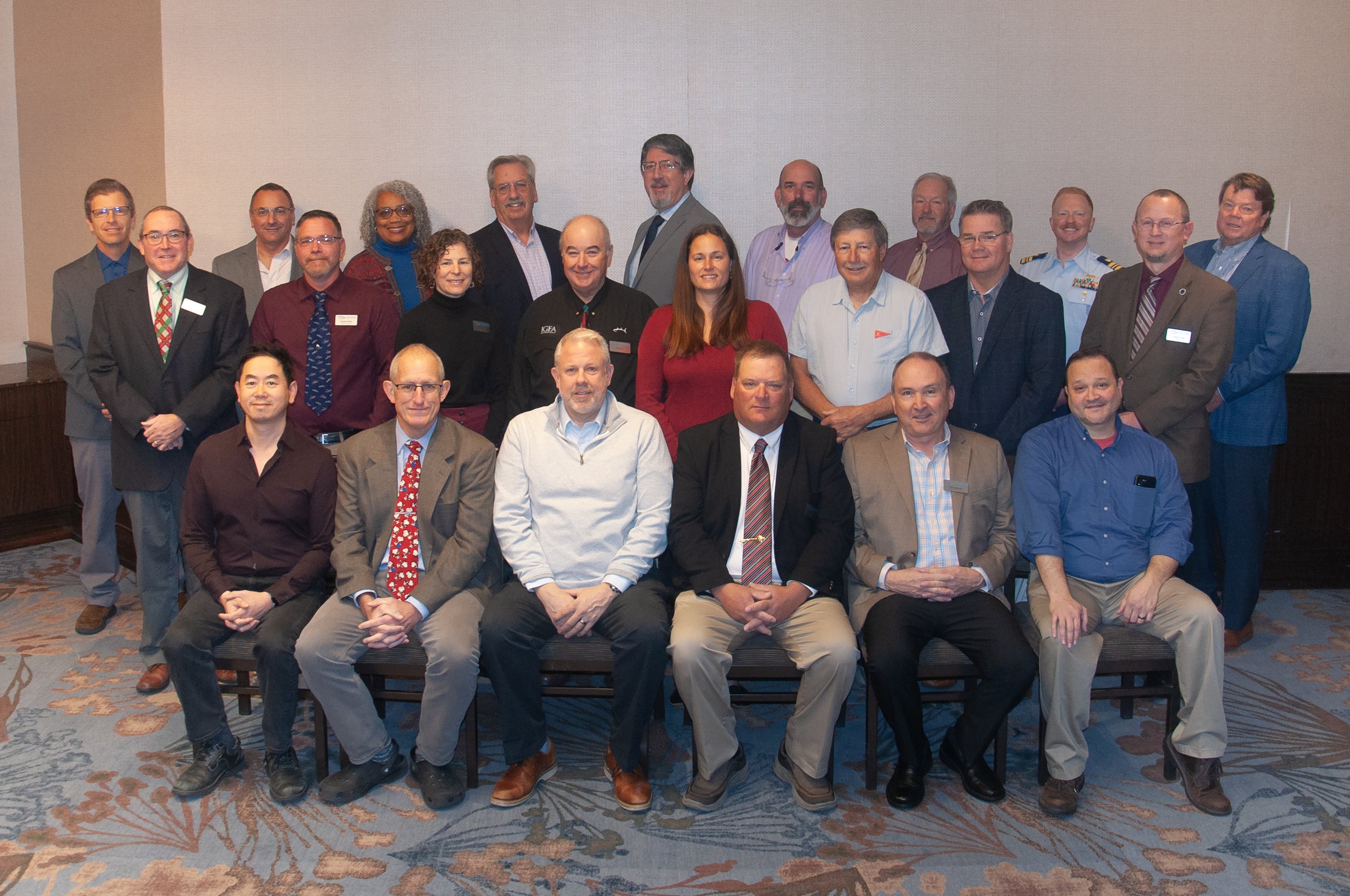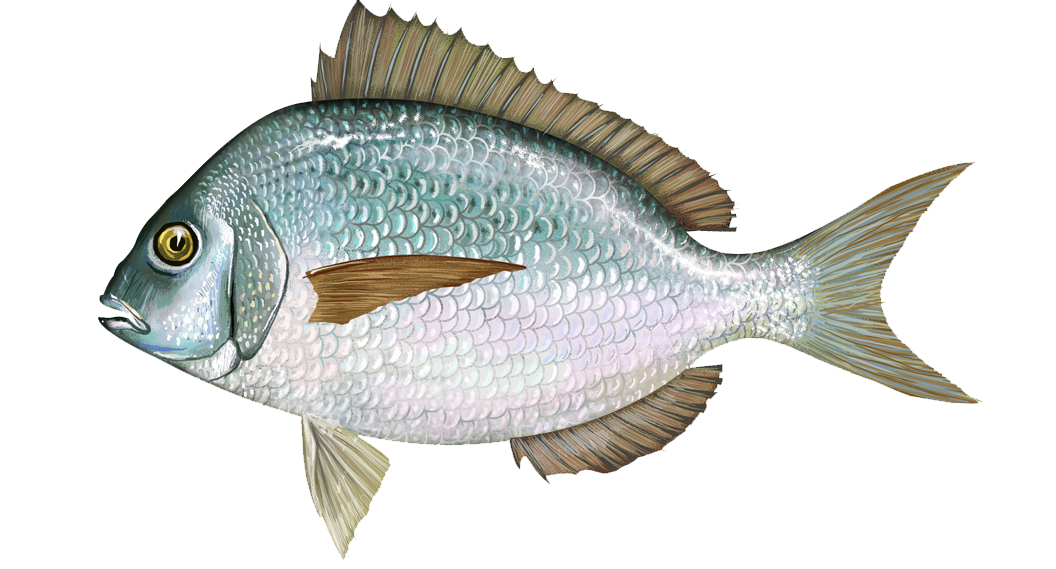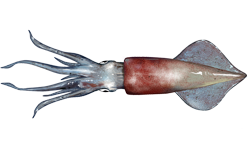Bluefish Allocation and Rebuilding Amendment
The Council met jointly with the Atlantic States Marine Fisheries Commission’s (Commission) Bluefish Management Board (Board) to consider final action on the Bluefish Allocation and Rebuilding Amendment. After reviewing a summary of oral and written comments submitted by 378 individuals and organizations, the Council and Board selected preferred alternatives and voted to recommend approval of the Amendment. The Council will forward the Amendment to NOAA Fisheries for final consideration and implementation while the Commission will consider final approval of the Amendment at its August meeting. A summary of the preferred alternatives is provided below.
Fishery Management Plan (FMP) Goals and Objectives. The Council and Board adopted the goals and objectives recommended by the Fishery Management Action Team.
Commercial/Recreational Allocations: Alternative 2a-4 (86% Recreational, 14% Commercial). This alternative allocates 86% of the annual catch limit (ACL) to the recreational sector and 14% of the ACL to the commercial sector. These allocations are based on catch data from 1981-2018 and landings data from 2014-2018 and 2009-2018. The revised allocations represent a 3% increase for the recreational sector and an equivalent decrease for the commercial sector compared to the previous allocations established through Amendment 1.
Allocation Change Phase-In: Alternative 2b-1 (No Phase In). The Council and Board considered but did not recommend an option to phase in the revised sector allocations over multiple years.
Commercial Allocations to the States: Alternative 3a-3 (2009-2018 Landings Data), 3b-2 (Phase-In), 3c-1 (No Trigger), 3d-2 (0.1% Minimum Default Allocation). These alternatives allocate a baseline quota of 0.1% to each state and then allocate the rest of the commercial quota based on landings data from 2009 to 2018. The decision to base state commercial allocations on more recent data is intended to improve efficiency within the commercial fishery and better reflect the current distribution of the stock. The allocation changes will be phased in over 7 years to reduce short-term economic impacts to the affected commercial stakeholders. The Council and Board also committed to reviewing the approved state allocations within 5 years.
Rebuilding Plan: Alternative 4d (7 Years). This rebuilding plan utilizes a constant fishing mortality approach and is projected to rebuild the stock within 7 years.
Sector Transfers: Alternative 5a-2 (Bi-Directional Transfers) and 5b-2 (10% Transfer Cap). These alternatives allow for quota transfers in either direction between the commercial and recreational sectors. Previously, quota could only be transferred from the recreational sector to the commercial fishery. The transfers will now be capped at 10% of the acceptable biological catch for a given year.
Management Uncertainty: Alternative 6b (Post-Sector Split). This alternative allows the Council and Board to apply a buffer to either sector, in the form of a quota reduction, to account for management uncertainty during specifications.
De Minimis Provisions: Alternative 7a (Status Quo). The Board considered but did not recommend changes to the de minimis provision in the Commission’s current Bluefish FMP.
See the press release for additional details, including a table with the revised state commercial allocations. More information and background documents are available on the Bluefish Allocation and Rebuilding Amendment page.
Recreational Reform Initiative
The Council met jointly with the Commission’s Interstate Fishery Management Plan Policy Board (Policy Board) to receive an update on the Recreational Reform Initiative. The presentation covered progress made to date and plans for future development of a Harvest Control Rule approach to setting recreational bag, size, and season limits for summer flounder, scup, black sea bass, and bluefish. The NOAA Fisheries Regional Administrator put forward a proposal for a Harvest Control Rule alternative for further development by the Fishery Management Action Team/Plan Development Team. The Council and Policy Board agreed that this proposal warrants further development.
Surfclam and Ocean Quahog 2021 Specifications Review
The surfclam and ocean quahog (SCOQ) fisheries are approaching the second year of multi-year specifications previously set for the 2021-2026 fishing years. The Council reviewed updated catch and landings information for both stocks, as well as recommendations from staff, the Surfclam and Ocean Quahog Advisory Panel (AP), and the Scientific and Statistical Committee (SSC), and determined that no changes to 2020 measures are warranted. To maintain the current measures, the Council also voted to recommend suspending the minimum shell length for surfclams in 2022. These specifications are described in detail in the final rule published May 13, 2021.
Longfin Squid, Butterfish, and Illex Squid Specifications and Other Management Issues
The longfin squid and butterfish fisheries are approaching the second year of previously-set multi-year specifications. The Council reviewed updated catch and landings information for both stocks, as well as recommendations from staff, the Mackerel, Squid, Butterfish AP, and the SSC, and determined that no changes to previous actions are warranted. The longfin squid quota would remain the same and the butterfish quota would increase 81% for 2022 from 2021. These specifications are described in detail in a proposed rule published May 27, 2021. After reviewing similar information for Illex squid, the Council recommended increasing the acceptable biological catch (ABC) by 10%, from 30,000 MT to 33,000 MT for both 2021 and 2022 (the Illex quota would increase similarly).
The Council also considered two issues identified in the Council's response to the 2020 Executive Order on Seafood Competitiveness. First, the Council reviewed the current 10,000-pound Illex trip limit implemented once the directed Illex fishery closes. Based on a review of observer data from longfin trips after Illex fishery closures in 2017-2019, staff reported that instances of Illex catch above 10,000 pounds were relatively infrequent, and the majority of discards occurred due to market concerns rather than regulations. The Council did not recommend any changes to Illex management measures at this time. Second, the Council reviewed the appropriateness of the current 3-inch mesh requirement for retaining more than 5,000 pounds of butterfish (designed to reduce catch of small butterfish during directed fishing). Based on a review of observer data from 2017-2019 longfin trips, staff found that instances of butterfish catch above 5,000 pounds were relatively infrequent and that the majority of observed discards occurred due to market concerns. The Council did not recommend any changes to the butterfish mesh regulations. Staff will continue to monitor observer data for issues with regulatory discarding.
Unmanaged Landings
The Council reviewed a report on commercial landings from Maine through North Carolina of species that are not managed at the state or federal level, as well as commercial landings of the species designated as Ecosystem Components through the Council’s Unmanaged Forage Omnibus Amendment. The goal of this report is to look for signs of developing commercial fisheries for unmanaged species. The Council asked questions about some landings trends but did not express concern about any increases in landings.
The Council also discussed an exempted fishing permit (EFP) application from Lund’s Fisheries. The application requests the ability to catch up to 3,000 MT (6.6 million pounds) of Atlantic thread herring in 2022. This requires an exemption from the 1,700-pound possession limit implemented through the Unmanaged Forage Omnibus Amendment. The goal of the EFP is to demonstrate the potential for a commercial thread herring purse seine fishery in Mid-Atlantic federal waters. EFPs are issued by NOAA Fisheries. The agency publishes Federal Register notices for EFP applications, with associated comment periods. A Federal Register notice has not yet published for this application. The Council agreed to work through the Ecosystem and Ocean Planning Committee to write a comment letter on this EFP application after first getting input from the SSC.
Habitat Updates
Staff from NOAA Fisheries Greater Atlantic Regional Fisheries Office (GARFO) Habitat and Ecosystem Services Division (HESD) provided updates on habitat-related activities and projects of interest in the region. The first presentation from Karen Greene focused primarily on the draft NOAA Mitigation Policy for Trust Resources. The Council will be submitting a comment letter on that draft policy, which is open for comment until July 12, 2021. Ms. Greene also provided brief updates on climate and coastal resiliency projects and infrastructure and port development in the Greater Atlantic region. The second presentation from Peter Burns included updates on aquaculture projects and Aquaculture Opportunity Areas (AOAs).
Offshore Wind
The Council received several presentations on offshore wind energy development. First, Brian Hooker (Bureau of Ocean Energy Management or BOEM) provided updates on a proposed sale notice for additional offshore wind energy leases in the New York Bight as well as updates on select environmental studies. Next, Peter Burns (NOAA Fisheries GARFO) provided an update on recent activities and offshore wind data query tools. Finally, the Council received presentations from two wind developers on several projects of interest in the region. Vineyard Wind provided an update on the Vineyard Wind 1 project, including compensatory fisheries mitigation, fisheries science, and other topics. Ørsted provided an update on the South Fork Wind project, with emphasis on fisheries monitoring efforts. Ørsted also presented on the Ocean Wind project, including environmental and fisheries monitoring efforts.
The Council discussed observations from a party boat captain based in Ocean City, MD suggesting that black sea bass stop feeding or temporarily leave areas where sub-bottom profilers are used for offshore wind survey work. The Council agreed to send a letter to Mid-Atlantic wind lease holders, BOEM, and NOAA Fisheries requesting that sub-bottom profilers not be used for survey work during September 15 through November 15 this year to avoid impacts on important recreational fisheries in the region. This is a time of year when the recreational black sea bass season is open but recreational fisheries for other important species are closed.
Black Sea Bass Commercial State Allocations
The Executive Director of the Atlantic States Marine Fisheries Commission (Commission) briefed the Council on a recent decision by the Commission’s Policy Board’s to remand the black sea bass commercial state allocations to the Summer Flounder, Scup, and Black Sea Bass Management Board (Management Board) for corrective action. The Council discussed the implications of this decision and agreed to revisit these allocations jointly with the Management Board.
As background, in December 2020 and February 2021 the Council and Management Board jointly approved several changes to the management program for black sea bass commercial fisheries through the Council’s Black Sea Bass Commercial State Allocation Amendment and the Commission’s Addendum XXXIII. These changes included modifying the state allocations of the commercial black sea bass quota, adding the state allocations to the Council’s FMP, and modifying the federal in-season closure regulations. Under the allocation changes approved in February 2021, Connecticut’s baseline allocation would increase from 1% to 3% of the coastwide quota to address its disproportionally low allocation compared to the increased availability of black sea bass in state waters. In March 2021, the State of New York appealed these allocation changes, arguing that New York’s baseline quota should increase similarly to that of Connecticut as it had also experienced a significant disparity between allocation and abundance/availability of black sea bass in Long Island Sound. The Commission’s Policy Board considered this appeal in May 2021 and found that it was justified. They remanded the specific section of Addendum XXXIII addressing baseline allocations back to the Management Board for corrective action to address impacts to New York’s baseline allocation in a manner comparable to the consideration given to Connecticut. A detailed summary of this action is available in the ASMFC Spring 2021 Meeting Summary (beginning on p. 13).
If the Council and Commission do not maintain identical recommendations for these allocations, this will pose challenges for implementation at the federal level and may result in disapproval of portions of the Council’s amendment by the Secretary of Commerce. For this reason, the Council agreed to rescind submission of the amendment to NOAA Fisheries for review and to revisit these allocations in coordination with the Management Board later this year. Based on the remand, only the base allocations will be reconsidered. Other actions taken through the Black Sea Bass Commercial State Allocation Amendment/Addendum XXXIII will not be revised.
Electronic Reporting Issues
South Atlantic For-Hire Electronic Reporting Requirements
The Council discussed concerns about new for-hire electronic reporting requirements in the Southeast region. Last year the Southeast Regional Office (SERO) implemented the South Atlantic Fishery Management Council’s (SAFMC) For-hire Reporting Amendment, which requires weekly electronic reporting for all South Atlantic Snapper-Grouper, Atlantic Coastal Migratory Pelagics, and Atlantic Dolphin Wahoo Charter/Headboat permit holders. This action affects a portion of GARFO for-hire permit holders who also hold Southeast charter/headboat permits. In addition to changing the timing and mechanism of reporting, this action added a new requirement to report socioeconomic data from each trip, including trip fee, fuel used, and the price of fuel. The Council has received a number of complaints about these socioeconomic questions. Specific concerns include the increased reporting burden, the lack of clarity in the utility of these questions, lack of buy in, and the probability of inaccurate data if a for-hire captain does not readily know the amount of fuel used or the price of fuel. Given the impact of these requirements on some Mid-Atlantic for-hire operators with dual permits, the Council agreed to send a letter to SERO and/or SAFMC recommending that the socioeconomic data fields be made optional.
GARFO Update on eVTR and One-Stop-Reporting
GARFO Regional Administrator Michael Pentony provided an update on the development of one-stop reporting functionality in the NOAA FishOnline eVTR application. Beginning on November 10, 2021, all commercial vessels with federal permits for species managed by the Mid-Atlantic or New England Council will be required to submit vessel trip reports electronically as eVTRs within 48 hours of the end of a trip. Vessel operators will be able to choose between several NOAA Fisheries-approved eVTR applications. GARFO has previously indicated that the FishOnline application would be ready to support one-stop reporting for dual permitted vessels (those holding both a GARFO permit and a SERO and/or HMS permit) by the time commercial eVTR requirements are implemented. During the meeting, Mr. Pentony informed the Council that development of one-stop reporting through FishOnline is behind schedule and will not be available until mid-2022. This will have the most direct impact on the 41 dual permit holders currently using FishOnline who may have been expecting one-stop reporting to be available later this year. The majority of the remaining dual permit holders are either using ACCSP’s eTrips application, which already offers one-stop reporting, or they are using paper VTRs and can select eTrips when they transition to electronic reporting. In the upcoming months the Council will work with GARFO to conduct outreach and training on eVTR applications and reporting requirements. Dual permit holders will be encouraged to choose eTrips if they wish to use one-stop reporting.
Other Business
Presentation: MRIP 2020 Estimates
Dr. Richard Cody (NOAA Fisheries Office of Science and Technology) gave a presentation on the recently-released 2020 MRIP catch estimates and the methodology used to bridge the data gaps in 2020 caused by COVID-19. The presentation can be viewed here.
Research Set-Aside
The Council received an update on four upcoming workshops (3 webinars and 1 in person) which will explore potential redevelopment of the Research Set-Aside (RSA) program. The first workshop will be held on July 15 and will focus on research. The funding and enforcement workshop webinar meetings are scheduled for August 31 and October 14, respectively. Finally, an in-person workshop will be held in November (location and specific date TBD) to summarize and report the recommendations of the series of workshops.
Next Meeting
The next Council meeting will be held Monday, August 9 – Thursday, August 12, 2021 in Philadelphia, Pennsylvania. The meeting will be conducted using a hybrid format, with some in-person components as well as continued virtual meeting access. Stay tuned for additional details about how to participate on our website and via our email list.

















